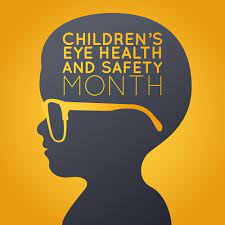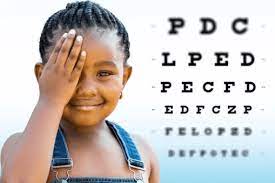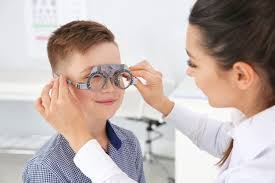
Top Tips for Protecting Children’s Eye Health
Children’s eye health is a paramount concern for parents and caregivers alike. Ensuring optimal vision in our young ones starts with understanding the importance of regular eye check-ups and implementing safety measures. Dive into this comprehensive guide to navigate the essentials of children’s eye health and safety.


As parents, we strive to provide the best care for our children, ensuring their overall well-being and development. However, one aspect that often goes overlooked is their eye health and safety. With the increasing use of digital devices and exposure to harmful environmental factors, it has become crucial to prioritize children’s eye health. That is why Children’s Eye Health and Safety Month in 2023 serves as a timely reminder to take proactive measures to protect our little ones’ precious sense of sight.
The Importance of Regular Eye Exams
Regular eye exams are essential for maintaining good eye health in children. These exams not only detect vision problems but also help identify underlying issues that may affect their overall development. Many eye conditions, such as amblyopia (lazy eye) or strabismus (crossed eyes), can be effectively treated if detected early. By scheduling regular eye exams for your child, you can ensure that any potential problems are identified and addressed promptly.


It is recommended that children have their first comprehensive eye exam at around six months of age. This initial examination helps identify any congenital eye conditions or refractive errors that may require early intervention. Subsequent exams should be scheduled at the age of three, before starting school, and then annually thereafter. By adhering to this schedule, you can stay ahead of any potential vision issues and ensure your child’s eyes are healthy and functioning optimally.
Protective Eyewear during Outdoor Activities for Children’s eye health
Outdoor activities play a vital role in a child’s physical and mental development. However, it is important to remember that prolonged exposure to the sun’s harmful ultraviolet (UV) rays can have detrimental effects on their eyes. To safeguard their vision, it is crucial to provide children with appropriate protective eyewear when engaging in outdoor activities.
When selecting sunglasses for your child, opt for those that offer 100% UV protection. Look for labels that indicate the sunglasses meet the American National Standards Institute (ANSI) requirements for UV protection. Additionally, choose sunglasses that wrap around the face and have impact-resistant lenses to provide comprehensive coverage and prevent injury.
Reducing Digital Eye Strain
In today’s digital age, children are spending more time than ever in front of screens, whether it be for schoolwork or entertainment. This increased screen time can lead to digital eye strain, causing symptoms such as dry eyes, headaches, and blurred vision. To protect your child’s eyes from the negative effects of prolonged screen use, it is important to establish healthy habits and implement preventive measures.
Encourage regular breaks from screens by following the 20-20-20 rule: every 20 minutes, have your child look at an object 20 feet away for at least 20 seconds. This practice helps alleviate eye strain and allows the eyes to rest. Additionally, ensure that the screen is positioned at an appropriate distance from your child’s eyes, with the top of the screen at or slightly below eye level. Adjusting the brightness and contrast settings on devices can also help reduce eye strain.


Promoting Eye Safety at Home and School
Accidents can happen anywhere, including at home and school. It is crucial to create a safe environment that minimizes the risk of eye injuries. Simple measures can go a long way in preventing accidents and protecting your child’s eyes.
At home, ensure that hazardous substances such as cleaning products or chemicals are stored out of reach of children. Keep sharp objects like scissors or knives properly stored and teach your child about their safe use. When engaging in activities that involve projectiles, such as sports or DIY projects, make sure your child wears appropriate protective eyewear.
Similarly, schools should prioritize eye safety by implementing safety protocols and providing protective eyewear when necessary. Teachers and staff should be trained to recognize potential hazards and take appropriate measures to prevent eye injuries. By fostering a culture of eye safety, we can significantly reduce the risk of accidents and protect our children’s vision.
Children’s Eye Health and Safety Month in 2023 serves as a reminder for parents to prioritize their child’s eye health. By scheduling regular eye exams, providing protective eyewear for outdoor activities, reducing digital eye strain, and promoting eye safety at home and school, we can ensure our children’s eyes are protected and their vision remains clear. Let us take proactive steps to safeguard their most precious sense and set them on a path of lifelong eye health.
Disclaimer: The information provided in this content is for general informational purposes only. It is not intended as medical or healthcare advice, diagnosis, or treatment. Always seek the advice of a qualified healthcare professional with any questions you may have regarding a medical condition or healthcare decisions.
















